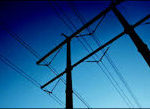Just over a decade ago, Dominion Energy Virginia announced plans to spend about $1.75 billion of its ratepayers’ dollars on a program to bury about 4,000 miles of its residential service lines underground. As of the end of last year, the tally was just over 2,000 miles buried at a total cost of $994 million.
The original goal was reported by Jim Bacon, who was initially favorable to the idea. The update comes from an annual report dated March 29 and posted by the State Corporation Commission. This reporter, who admittedly already lived in neighborhoods with underground lines installed at the cost of the developer, was skeptical of paying to bury somebody else’s lines, and this new report doesn’t ease the irritation.
For the individual customers who have benefited (the total number mentioned in the document is 54,000 accounts), fewer and shorter duration outages can be shown. For other customers downstream on the same lines (another 46,000) similar significant improvements are seen. So, 100,000 of the company’s 2.6 million customer accounts have seen direct or downstream benefits.
The program’s cost has been a steady presence on all 2.6 million monthly bills. The current cost is $1.99 on that not-really-typical monthly residential bill of 1,000 kilowatt hours. For a large industrial customer the cost is $1.38 per 1,000 kwh. But a factory might buy one million kilowatt hours in a month and pay an extra $1,380 to bury residential lines.
The merry-go-round continues (2,000 miles to go on the original goal), and Dominion has an application pending to continue the program and raise those rates as of August of this year.
The company is currently in phase seven of the program. Phase one ended in August of 2016. The individual phase seven projects to date are detailed in the final pages of the report. One project might serve a single house or two, and others appear to benefit a whole block, subdivision or apartment house (272 units in one case.)
Over the years, Northern Virginia has received 525 miles placed underground out of the total of 2,028 miles buried, and the Richmond Metro region 471 miles. Southeastern Virginia has seen only 270 miles buried, but underground lines may have been more common there from the start. Even in neighborhoods covered, about 10% of customers retained overhead lines. They are more likely to remain in rural areas (40% in the Valley and Piedmont regions.)
Not surprisingly, the projects with few homes per mile or per transformer cost way more than those with more density. The project burying the lines to 272 homes cost about $2,000 per unit, but another project cost $333,000 with one customer. If the three customers downstream are added to the numerator on that project, it comes it at just $80,000 each, but in another case $117,000 was spent on one house with nobody else downstream. Five digits per customer are common on the list.
Dominion does indicate the reliability benefits as measured so far are dramatic. The service interruption minutes on average dropped from almost 700 minutes per year to about 2-3. The average time to restore service was cut in half. This is not a surprise to those already living in areas with underground service (which, again, we paid for ourselves in the price of the house.)
Fortunately, in the years this program has been underway, the utility has not experienced a real weather emergency, another hurricane, tornado outbreak or a repeat of the 2012 derecho. That could be the real test of whether this has been money well spent by those of us not gaining new buried powerlines.
This is one of the many utility programs that has received favorable consideration in state law from the General Assembly, with its most active patron being former Democratic Senate Leader Richard Saslaw of Fairfax. And it earns the same roughly 10% profit margin as the rest of the company’s capital programs, although how this shares the same level of risk as a new power plant is hard to see.
Do most of you care? Probably not. It is just another hidden $20-40 in cost per year (more if you are a business customer, of course.) It is just another government program, charging A to help B with a healthy skim for overhead and profit. Once established, they do not go away.


Leave a Reply
You must be logged in to post a comment.